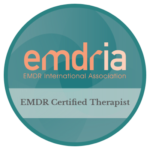What is EMDR therapy?
According to EMDRIA, Eye Movement Desensitization and Reprocessing (EMDR) therapy is an extensively researched, effective psychotherapy method proven to help people recover from trauma and other distressing life experiences, including PTSD, anxiety, depression, and panic disorders.
Take a look at this video explaining EMDR.
How does EMDR therapy affect the brain?
According to EMDRIA, our brains have a natural way to recover from traumatic memories and events. This process involves communication between the amygdala (the alarm signal for stressful events), the hippocampus (which assists with learning, including memories about safety and danger), and the prefrontal cortex (which analyzes and controls behavior and emotion). While many times traumatic experiences can be managed and resolved spontaneously, they may not be processed without help.
Stress responses are part of our natural fight, flight, or freeze instincts. When distress from a disturbing event remains, the upsetting images, thoughts, and emotions may create an overwhelming feeling of being back in that moment, or of being “frozen in time.” EMDR therapy helps the brain process these memories, and allows normal healing to resume. The experience is still remembered, but the fight, flight, or freeze response from the original event is resolved.
Benefits and Things to Remember about EMDR
- EMDR does not require talking in detail about the past trauma
- EMDR allows the brain to resume its natural healing process
- EMDR tends to be completed in fewer sessions compared to traditional Psychotherapy
- EMDR is designed to resolve unprocessed traumatic memories
- EMDR can be helpful with a wide range of challenges and symptoms
- I believe EMDR is an amazing tool that I enjoy utilizing with clients and feel honored to be able to witness healing in the therapeutic space and see clients break-through barriers
Let’s start your recovery journey today.
Call me today at (408) 785-2189.


